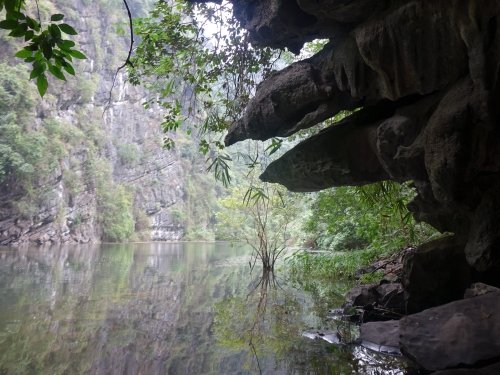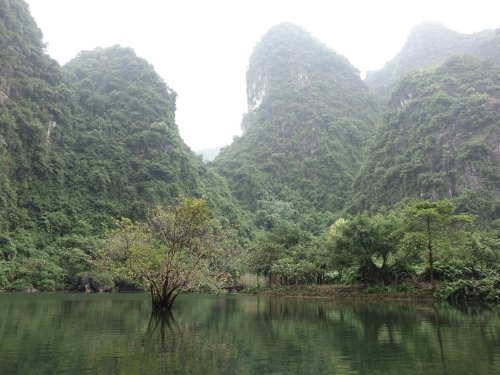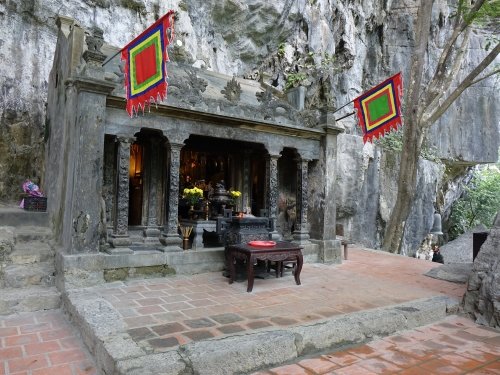Els Slots
WHS #690: Trang An
The Trang An Landscape in Northern Vietnam essentially is a scenic karst area with some prehistoric cave shelters thrown in. I stayed for 3 nights in the town of Tam Coc, at a homestay in the core zone next to the rice paddies and with views on the karst hills. It was pouring rain on the day that I arrived and on the third day I had planned to see another nearby WHS (the Ho Citadel), so I only had one full day in the Trang An area. In hindsight I felt that was enough, although maybe in better weather one might add more activities.

I started my day of exploration on a rented bike. I rode it for about half an hour to the docking area of the Trang An boat trips. Both Tam Coc and Trang An do have regulated boat rides which are very popular and possibly the best way of getting to know this area. At Trang An, you can choose between 3 routes. They all cost 200,000 dong (ca. 7.5 EUR) and take 2.5-3 hours. Two of them pass along the popular Kong: Skull Island film set, but I went for the other one – Tour #1 with 3 temples and 9 caves. You pay at a central ticket office (which also has some exhibits, a video and even an ATM for the frequently needed replenishment of Vietnamese dong!). I was put in a boat with a German couple and a male rower.
Lifejackets are compulsory: they came in yellow and orange which made for more colourful scenes along the way than the drab weather otherwise delivered. Although I had arrived relatively early at 9.15 am, there were dozens of boats already plying their route. Never did it feel too crowded though, we mostly saw others only on the long stretches. Our first cave entering by boat was the most spectacular one: the Toi Cave is over 300 meter long, dark and with a very low and spikey ceiling. We sat on our benches bent forward and heads down for most of the time.

The area’s most distinguishing feature from for example the Guilin karst area is the presence of ‘karst cockpits’. These are self-contained depressions filled with rain water, fully surrounded by high karst towers and with no obvious entrance or exit. It’s magical when you come floating out of a dark cave and just find yourself in a kind of pond with hills on all sides.
From the in the boat tour included temples, I enjoyed the Tran Temple the most. It takes a lot of steps to get there but it has a very nice setting. After lunch I cycled to the Thai Vi Temple, on the other side of Tam Coc. This is a very fine bike ride on narrow paths between the rice paddies. On the way you encounter several shrines, one of them (Thieng Huong Dong) spectacularly constructed in yet another cave.

Trang An did have a hard time in being admitted to the WH List. Both ICOMOS and IUCN advised a Deferral, which were fully overturned by the WHC. And indeed, its cultural claims – prehistoric people lived seasonally in caves in the area - are poor and the focus on the many temples & pagodas in the nomination file (but not part of the OUV) did not humour ICOMOS. Its natural features though should have been enough. For a seasoned traveller, it is easy to get complacent about WHS like this – do you need to go and see Trang An if you already have been to the South China Karst and Ha Long Bay? Well, for its original karst features I think Trang An can easily hold its own. The ratings so far on this website (a score of just over 3.5 out of 5) seem to underline this.
More on
Els SlotsComments
No comments yet.
